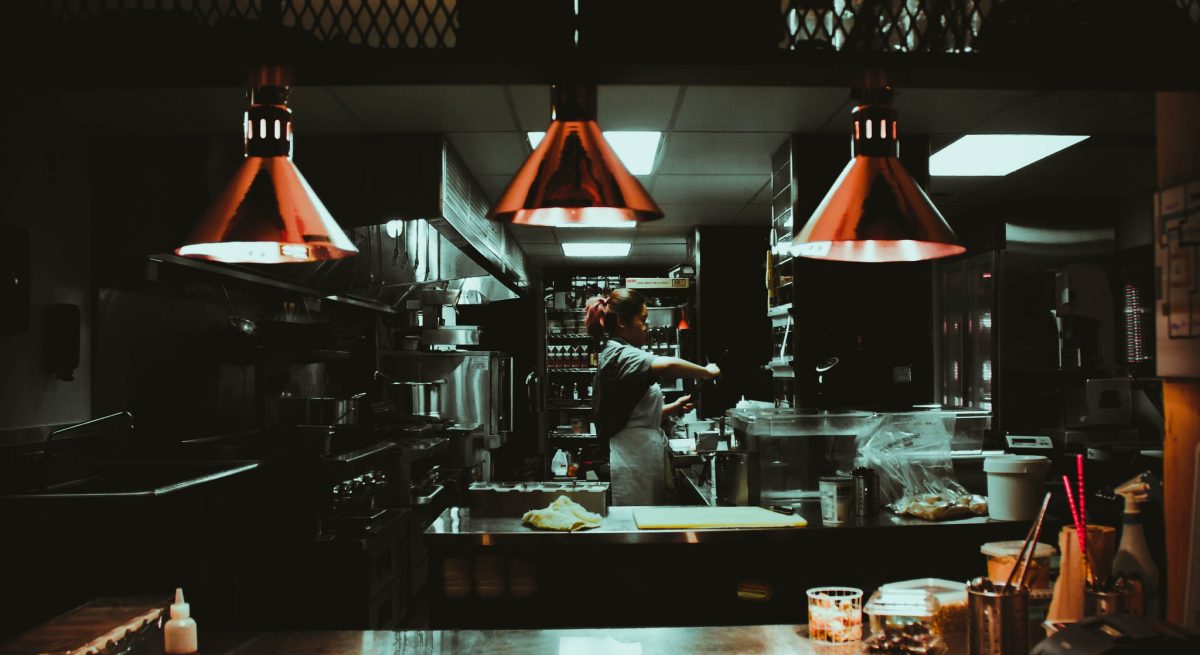Why Innovative Dining Experiences Are Driven by Facility Management Technology
4 Min Read By Michael Rivisto
A new normal has evolved in the restaurant industry: Digital delivery sales are expected to grow at a compound annual rate of over 22 percent through 2023, according to L.E.K. Consulting. In response, 37 percent of restaurants are offering online ordering and 32 percent accept mobile payments.
Though the delivery revenue trajectory is positive, this may also stir up panic in the industry-
Is going out to eat in style anymore?
Now more than ever, restaurant leaders need to find new ways to create truly one-of-a-kind dining experiences that give people a reason to leave the comfort of their home and ditch the ease of ordering with the click of a button. It’s not enough just to serve great food; it’s about exceptional customer service, the right ambiance in the room, and having a high-functioning kitchen and facility that the staff can count on as the backbone of the entire dining experience.
If equipment isn’t working properly, you run the risk of disappointed customers and a loss of sales. To keep customers happy and business booming, you need to invest in a strategic maintenance plan and the right technology to make everyone’s jobs easier. With capabilities like machine learning and AI, facility managers are able to gain deeper visibility into the entire repair and maintenance process, analyze and leverage information more efficiently, and ultimately make insights that will help improve the customer relationships at your restaurant.
Here are some more types of FM technology that will help drive an innovative dining experience.
Asset Tracking Software
Having the right, functioning equipment is clearly vital to the in-person dining experience. Unfortunately, restaurants not only have to manage the repair and upkeep of traditional retail equipment like light fixtures, HVAC units, floors, and electricity. They also deal with restaurant-specific equipment like stoves, dishwashers, refrigerators, and ovens that need to be working at full potential in order to produce high-quality food that people expect. This can add complications to the asset tracking process since with these assets you also need to be thinking about things like EPA-required leak record requests and EPA compliance standards.
Having a system in place that tracks the work histories, warranties, and status of each asset in one central location is critical. It will improve your facility team’s organization and help keep repair and maintenance spend low. Many asset trackers provide you with valuable data insights (like R&M spending patterns) that direct your team to be more strategic about asset maintenance in the future.
For example, by looking at a refrigerator’s repair history, you can see that you ordered repairs for this particular asset twice in the past year. This historical data can be used to make a more informed “repair vs. replace” decision – if the cost of future repairs surpasses the investment of buying new, you’ll choose to replace the refrigerator and save money in the long run.
Preventive Maintenance
Preventive maintenance is maintenance that’s regularly performanced to keep your assets in good condition and working properly long term. When done sufficiently, you can avoid equipment unexpectedly breaking down and the need for costly repairs. When it isn’t done properly, you can become the restaurant that’s known for their plumbing always being down.
When you think of innovative dining experiences, your first thought may not be the simple things like working toilets and shoveled parking lots, but without functioning equipment and a well-kept facility, it’s impossible to retain your customers.
In order to not disrupt the ambiance of the dining experience, schedule preventive maintenance to avoid the highest-trafficked hours at your restaurant. This could be when the restaurant is typically less busy, i.e. a Tuesday morning, or when you know a piece of equipment won’t be needed, for example, the A/C unit during the winter.
Analytics
In order to take your restaurant experience to the next level, investing in technology with analytics capabilities is an important step. With all of the repair and upkeep that goes into making sure your restaurant is in pristine condition, costs are ultimately going to pile up. But what if there was a way to easily identify unnecessary spending and redirect this money to areas that will give you the best ROI? That’s where analytics comes in.
With data insights, you can pick out trends, make realistic goals, and even forecast future spend at your restaurant. These are all key components to a modern, successful business and allows restaurant managers to spend their energy towards improving things that are front in center to the customer experience, such as atmosphere, customer service, and quality of food.
Final Thoughts
As the dining industry continues to evolve, and consumers become increasingly tempted by the ease and convenience of mobile ordering, it’s easy for restaurant managers to feel discouraged. But, with the right facilities tools in place and a strong team behind it, there is an opportunity to create a truly exceptional customer experience that will stand out in a competitive marketplace.
When we realize that facilities management is the true backbone of a successful business, leaning on it to make innovative experiences becomes that much easier.


